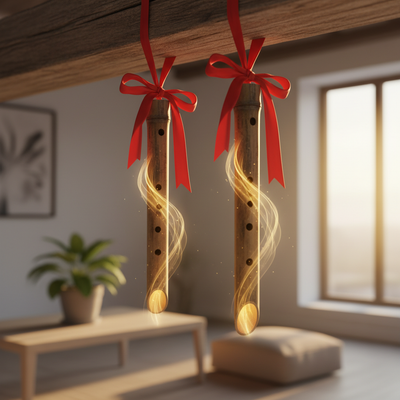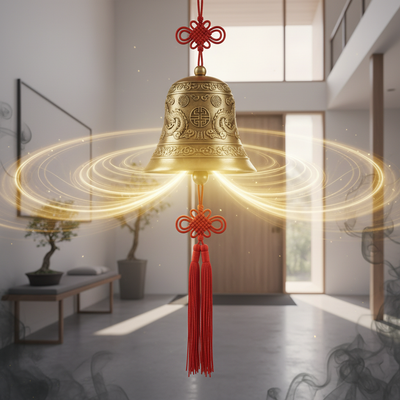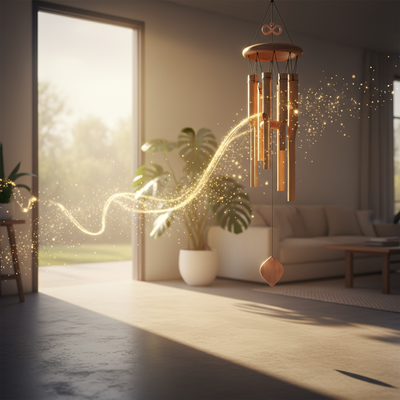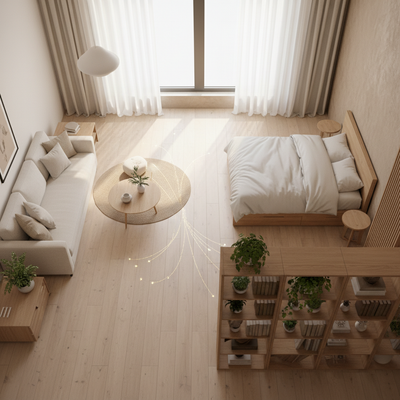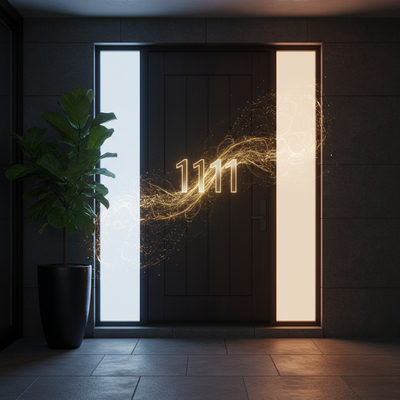Your bedroom should be more than just a place to sleep; it should be your personal retreat. This is the main idea behind feng shui bedroom design. Simply put, it's about organizing your space to improve the flow of positive energy, called Qi, to help you sleep deeply, feel refreshed, and connect with others. Why does this old practice matter today? Because the energy in your bedroom directly affects how well you sleep, your daily stress, and even your relationships. This complete guide gives you practical, step-by-step instructions. We will help you change your bedroom from just a place to sleep into a powerful retreat that takes care of your mind, body, and spirit. Get ready to sleep better and change your life.
Basic Feng Shui Rules

To use Feng Shui well, it helps to understand why these rules work. These basic ideas are the foundation for creating a peaceful space. They help you make smart choices that go beyond just following a list.
Understanding Qi Energy
Qi is the invisible life energy that flows through everything, including your home. In a bedroom, the goal is not to have fast, high energy, but to create a flow of Qi that is slow, calm, and healing. This gentle flow helps with healing and deep relaxation, which are needed for good sleep.
Yin and Yang Balance
Everything in the universe can be described using Yin and Yang—two opposite but connected forces. Yang is active, bright, and hard energy, like direct sunlight or a loud TV. Yin is quiet, dark, and soft energy, like a soft pillow or a quiet evening. A bedroom should be mostly a Yin space to help with rest and peace. We add small Yang elements to keep energy from getting stuck, creating a perfect balance for renewal.
The Power of Cleaning Up
Cleaning up clutter is the most important first step in any Feng Shui practice. Clutter, from piles of clothes to stacks of old magazines, creates stuck, messy energy. This physical mess turns into mental and emotional stress, making you feel anxious, confused, and "stuck." A clean, organized space is the foundation for a clear mind and smooth, healthy flow of Qi.
The Commanding Position
Of all the rules in feng shui bedroom design, placing your bed in the commanding position is the most important. It directly affects your sense of safety and how well you rest.
What is the Commanding Position
The commanding position means placing your bed so that when you are lying down, you can see the door to the room without being directly in line with it. This setup comes from our basic instincts. Being able to see who or what is coming into your space gives you a feeling of safety and control without thinking about it. It lets your nervous system fully relax, knowing you won't be surprised. This feeling of control over your space is essential for deep, uninterrupted sleep.
Three Rules for Bed Placement
To get the ideal commanding position, follow these three simple rules. They work together to create a foundation of support and safety.
- See the Door: Make sure you have a clear view of the main bedroom door from your pillow. You should not have to strain your neck or sit up completely to see the entrance.
- Not in Line with the Door: Your bed should not be directly across from the door, with your feet pointing straight out. This is called the "coffin position" and is considered the worst placement, as it is believed to let your personal energy drain away while you sleep.
- Solid Headboard and Wall: Your head should be supported by a solid wall. This gives you a sense of stability and support in your life. A strong, solid headboard makes this support even better. Avoid placing the head of your bed against a wall with a window, as this can feel unsettling and allow Qi to escape.
Solutions for Difficult Room Layouts
What if your room's design makes the ideal position impossible? Many modern bedrooms present challenges, but there are always effective Feng Shui solutions.
If your bed must be in line with the door, you can place a piece of furniture at the foot of the bed. A solid bench, a low bookshelf, or a storage chest can act as a barrier, blocking the direct rush of energy from the doorway. This piece should be sturdy and preferably slightly wider than the bed.
If you cannot see the door from your bed because of the room's shape, the fix is simple: a mirror. Place a small, stable mirror where it allows you to see a reflection of the doorway while you are in bed. Be careful not to place the mirror where it reflects you while you sleep, as this can be disruptive.
Using the Bagua Map
Once your bed is correctly placed, you can fine-tune your bedroom's energy using the Bagua map. This is an energy map that lets you improve specific areas of your life by working on the matching corners of your room.
How to Use the Bagua Map
We use a simple, modern version of the Bagua, which is an easy-to-use 3x3 grid. To use it, stand at the main door of your bedroom looking in. The door itself will be in one of the three bottom squares of the grid: Knowledge (bottom left), Career (bottom center), or Helpful People (bottom right). From there, you can identify the nine different life areas within your room.
Important Bedroom Bagua Areas
While every area of the Bagua is important, three are especially relevant to how a bedroom works and feels. Focusing on these will give you the best results for rest and relationships.
| Bagua Area | Location (from door) | How to Improve |
|---|---|---|
| Love & Relationships | Far Right Corner | This area is most important in a bedroom. Improve it with items in pairs: two nightstands, two lamps, two pillows. Use artwork that shows partnership and joy. Colors like soft pinks, reds, and peach can activate this corner. |
| Health & Family | Center Left Wall | This area connects to your physical health. Keep it very clean and vibrant. A healthy plant (if the room has enough light) or items made of wood are excellent choices. A photo of a favorite healthy landscape can also work well. |
| Knowledge & Self-Growth | Near Left Corner | This corner is perfect for supporting personal growth and wisdom. Place a small, carefully chosen stack of inspiring books here. It can also be a wonderful spot for a meditation cushion or a journal. Avoid any work-related materials to keep the energy restful. |
Smart Furniture Layout
Beyond the bed, where you place every piece of furniture affects the room's overall energy flow. A smart layout creates clear pathways for both you and the Qi, creating a sense of ease and order.
Your Nightstands
Think of your nightstands as the protectors of your sleep. They provide balance and support on either side of the bed.
- Do use two nightstands, even if you sleep alone. This creates balance and energetic harmony, which is especially important for attracting or keeping a partnership.
- Do choose nightstands that are about the same height as your mattress. Tables that are too high or too low can create an energetic imbalance next to where you rest.
- Don't let them become cluttered. A cluttered nightstand creates mental clutter. Keep only the basics: a soft lamp, a current book, a glass of water, and perhaps a small, meaningful object.
Dressers and Closets
These larger pieces of furniture anchor the room and should be placed carefully to avoid creating heavy energy.
- Do place heavy furniture against solid walls. This grounds them and adds to the overall sense of stability in the room.
- Don't use furniture that is too large or tall for the size of the room. Overpowering pieces can make a space feel cramped and "heavy," restricting the flow of Qi.
- Don't position furniture so that sharp corners or edges point directly at the bed. These are known as "poison arrows" (Sha Qi) and are believed to direct aggressive energy toward you while you sleep. If a sharp corner cannot be avoided, you can soften it by placing a plant in front of it or draping a piece of soft fabric over it.
Grounding with Rugs
Rugs are a powerful tool in Feng Shui for defining a space and grounding its energy. In the bedroom, a rug under the bed can anchor your personal energy field as you sleep.

Choose a rug that is large enough to extend at least two feet on either side of the bed. This ensures that the first thing your feet touch in the morning is a soft, grounding surface, setting a positive tone for the day. The texture and color of the rug should add to the overall calm, Yin atmosphere you are trying to create.
Color, Decoration, and Lighting
The visual choices you make are not just decorative; they are energetic. The colors, art, and light sources in your bedroom constantly influence your mood and the quality of Qi.
Choosing a Calming Color Scheme
Color is a form of energy with a specific vibration. For a restful bedroom, we recommend colors based on "skin tones." These are naturally calming colors that range from pale ivory and soft beige to rich brown and warm taupe. They create a nurturing and surrounding atmosphere. Soft, muted shades of blue, green, and lavender are also excellent choices, as they have peaceful and healing properties. Bright colors like bright red and vibrant orange are highly Yang and stimulating. They should be used sparingly, as small accents only, to avoid disrupting sleep.
Selecting Thoughtful Decoration
Every object in your bedroom should be something you love and that brings positive feelings. The artwork is especially important as it provides powerful visual messages to your subconscious mind.
- Choose images that reflect the feelings you want to create in your life. This could be a peaceful landscape, a calm abstract piece, or a joyful photo of you and your partner. The art should feel expansive, calm, and happy.
- Avoid artwork that is sad, lonely, aggressive, or chaotic. Also, it is generally recommended to avoid having too many family photos in the bedroom. This space is primarily for you and your partner, and the energy should be focused on rest and romance, not other family responsibilities. Finally, avoid prominent images of water (oceans, rivers), as this element can symbolize financial instability or emotional overwhelm when placed in a bedroom.
Creating Layered Lighting
Proper lighting is essential for managing the Yin-Yang balance throughout the day. A single, harsh overhead light is not enough. Instead, create a layered lighting system.
This should include ambient light (a gentle overhead fixture), task light (bedside lamps for reading), and accent light (a small lamp on a dresser). Most importantly, install dimmers on all your lights. This simple addition gives you complete control over the room's energy. You can have bright, more Yang light when getting ready in the morning and transition to a soft, low, Yin-like glow in the evening to prepare your body and mind for sleep.
Common Bedroom Mistakes
Sometimes, the biggest improvements come from fixing small but common mistakes. Here are a few frequent issues we see and their simple solutions.
Mirrors Facing the Bed
A mirror that directly reflects the bed is one of the most common Feng Shui problems. It's believed to disrupt sleep by bouncing too much energy around the room, which can keep your mind active. Energetically, it can also be seen as inviting the energy of a third party into a couple's relationship.
- Fix: The best solution is to move the mirror to a wall that does not reflect the bed, such as the inside of a closet door. If the mirror is fixed in place, like on a sliding closet door, cover it at night with a beautiful piece of fabric, a scarf, or a custom-made screen.
Electronics in the Bedroom
Televisions, computers, exercise equipment, and even smartphones give off strong, active Yang energy. The blue light from screens is also scientifically proven to disrupt melatonin production and sleep cycles. The bedroom should be a tech-free zone dedicated to rest and connection.
- Fix: Remove the television and any work-related equipment from the bedroom. Make it a rule. Create a central charging station for all phones and devices in another room, like the kitchen or living room, so they are not by your bedside at night.
Clutter Under the Bed
The space beneath your bed needs to be open and clear to allow Qi to move freely around you as you sleep. Storing items here creates stuck energy right under your body for eight hours a night. This is especially true for emotionally charged items like letters from an ex-partner, or messy items like jumbled shoes.
- Fix: Clear it out completely. Give the space a thorough cleaning and leave it empty. If you absolutely must use this space for storage due to a lack of closets, limit it to soft, sleep-related items only, such as clean linens, spare blankets, and pillows, neatly stored in breathable containers.
A Real-World Solution
We often work with clients who have challenging layouts. A common issue is when the only solid wall for a bed is also a wall with a window, which breaks the rule of solid support. In a recent consultation for a client who felt constantly unsettled in their new apartment, this was the exact problem. The team advised a practical, two-part solution. First, we had them install a tall, solid, and upholstered headboard. This created the feeling of a 'false wall,' providing substantial energetic support. Second, we recommended installing heavy, blackout curtains that they could draw closed every night. This simple fix blocked potential energy loss through the window and created a powerful sense of security and stability. The client reported a dramatic and immediate improvement in their sleep quality and overall sense of well-being.
Achieving Elemental Balance
For those looking to take their Feng Shui practice to a deeper level, we can use the Five Element theory (Wu Xing). This ancient system provides a sophisticated framework for fine-tuning your bedroom's energy.
The Five Elements
In Chinese philosophy, everything in the universe is made up of five elemental energies: Wood, Fire, Earth, Metal, and Water. A room that feels truly harmonious contains a balanced representation of all five. This system, known as Wu Xing, is a cornerstone of ancient Chinese thought used to describe interactions and relationships between all things.
Bedroom Element Connections
Each element is associated with specific colors, shapes, materials, and a particular type of energy or feeling. Understanding these connections allows you to intentionally add or remove elements to create the perfect atmosphere.
| Element | Energy/Feeling | Colors | Shapes | Materials |
|---|---|---|---|---|
| Wood | Growth, Vitality | Greens, Blues | Rectangular, Tall | Wood furniture, Plants, Cotton |
| Fire | Passion, Energy | Reds, Oranges, Pinks | Triangular, Pointy | Candles, Lighting, Wool, Leather |
| Earth | Stability, Grounding | Yellows, Browns, Beige | Square, Flat | Ceramics, Stone, Thick rugs |
| Metal | Clarity, Precision | Whites, Grays, Metallics | Round, Oval | Metal frames, Metal decor |
| Water | Flow, Serenity | Black, Dark Blue | Wavy, Asymmetrical | Mirrors, Glass, Silk |
A 3-Step Balancing Process
You can use this system as a tool to perfect the feel of your bedroom.
- Check the Feeling: Stand in your room and pay attention to how it feels. Is it cold, stark, and sterile? That suggests too much Metal. Does it feel heavy, dark, and stuck? That points to too much Earth. Does it feel unfocused or chaotic? Perhaps there is too much Fire or a mix of competing elements.
- Find the Missing Element: Based on your assessment, determine which energy is needed to create balance. A cold, sterile (Metal) room needs the warmth of Fire (a candle or a pink throw pillow) and the life force of Wood (a plant or a wooden picture frame). A heavy, stuck (Earth) room needs the clarity of Metal (a round metal tray on a dresser) and the growth of Wood to break up the density.
- Add with Purpose: You don't need a major redesign. Add one or two small items that represent the element you need. A small change can have a big impact. For example, adding a pair of ceramic (Earth) lamp bases can make a room that feels flighty and ungrounded feel more stable and secure.
Your Sanctuary Awaits
Creating a feng shui bedroom design is a journey of intention, not a race to perfection. By focusing on the basic principles—placing your bed in the commanding position, ensuring the space is free of clutter, and thoughtfully balancing the colors, decoration, and elements—you are taking active and powerful steps to support your own well-being.
You do not have to do everything at once. Start with a single, manageable change. Clear the clutter from under your bed this weekend. Move a mirror that reflects you while you sleep. Notice the subtle shift in how the room feels and, more importantly, how you feel within it. Your bedroom is a mirror of your inner world; by taking care of it, you are taking care of yourself. Make it a sanctuary that truly restores your body, calms your mind, and nourishes your spirit.
